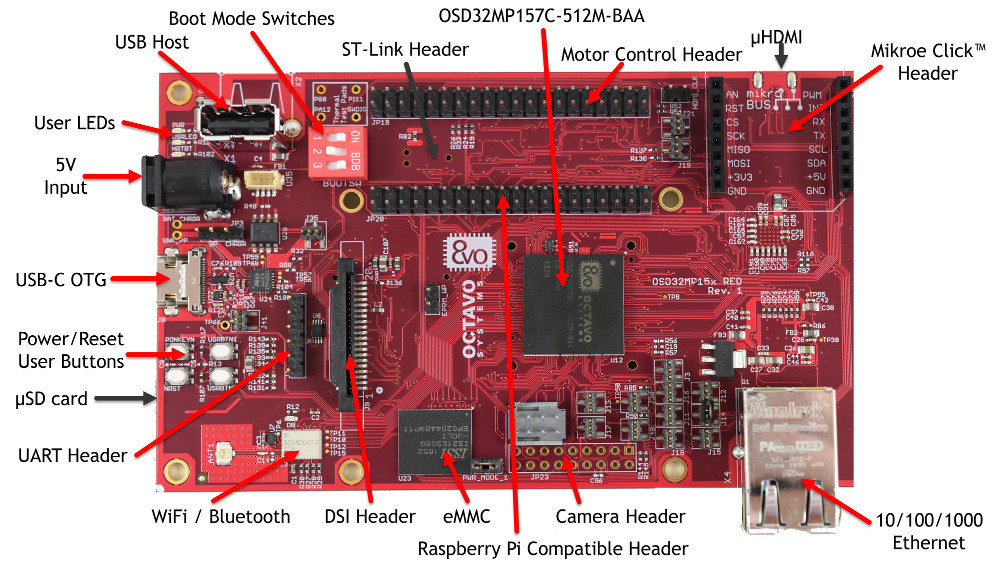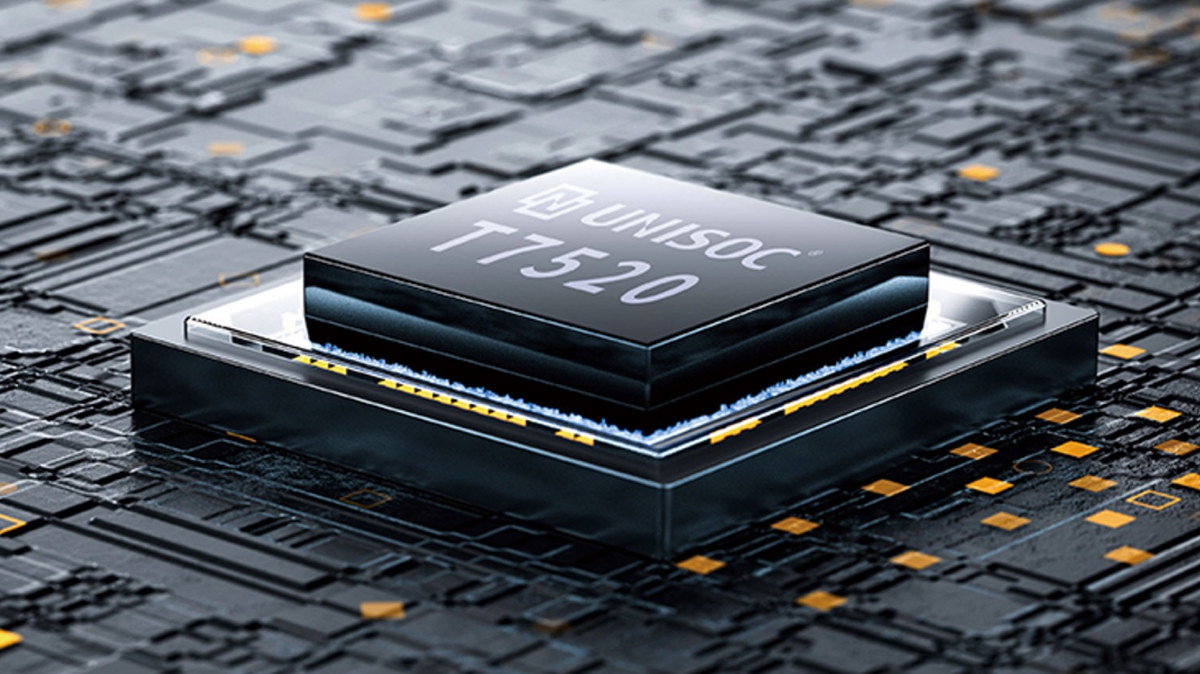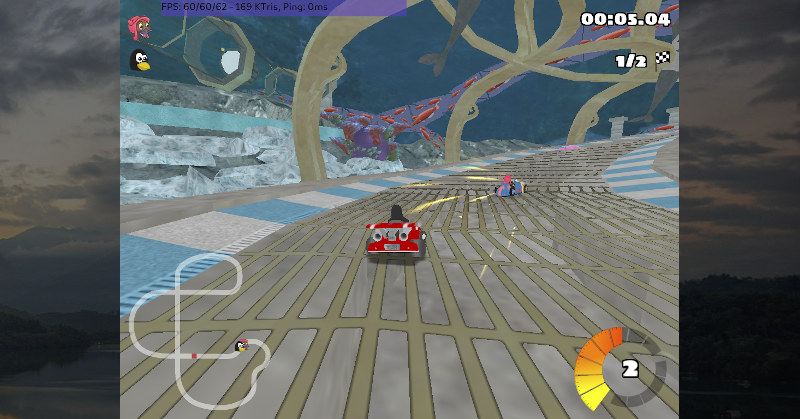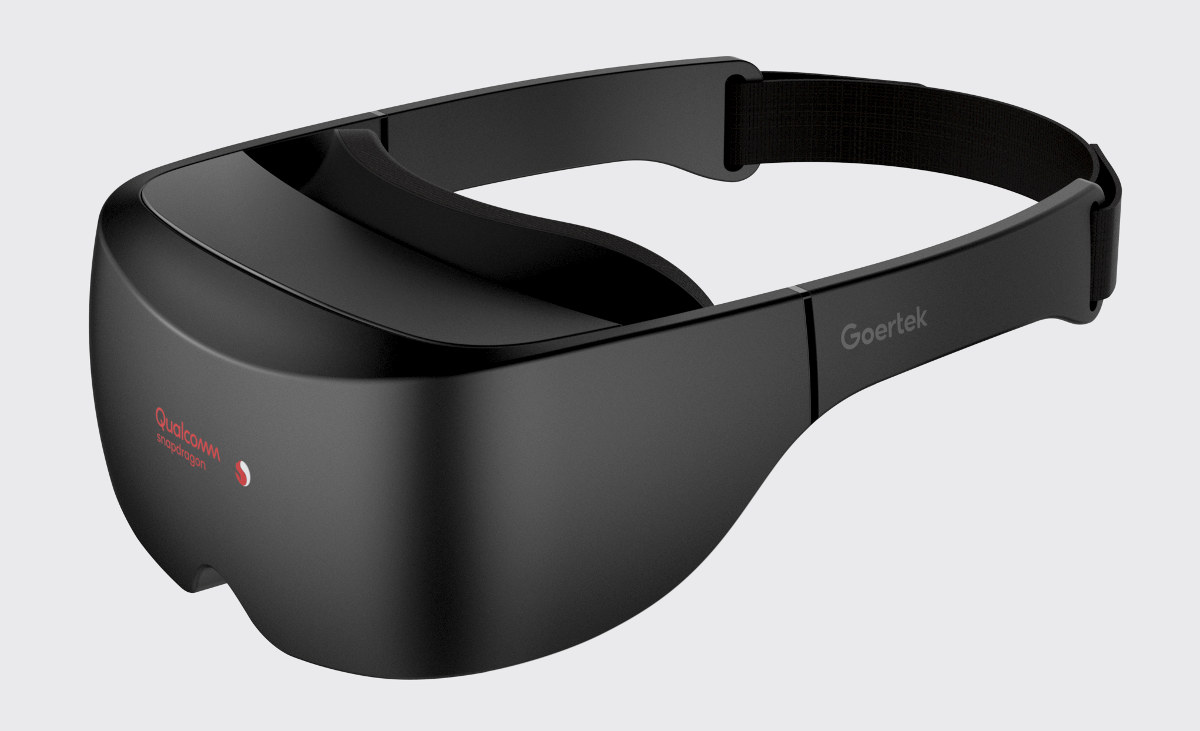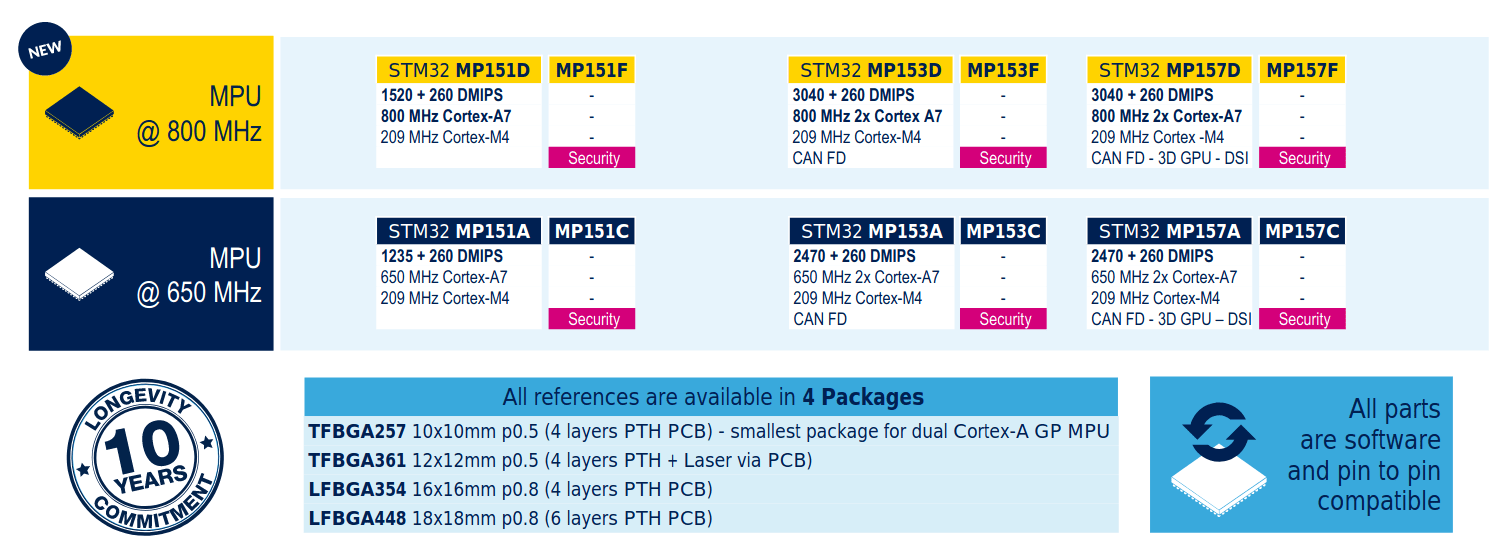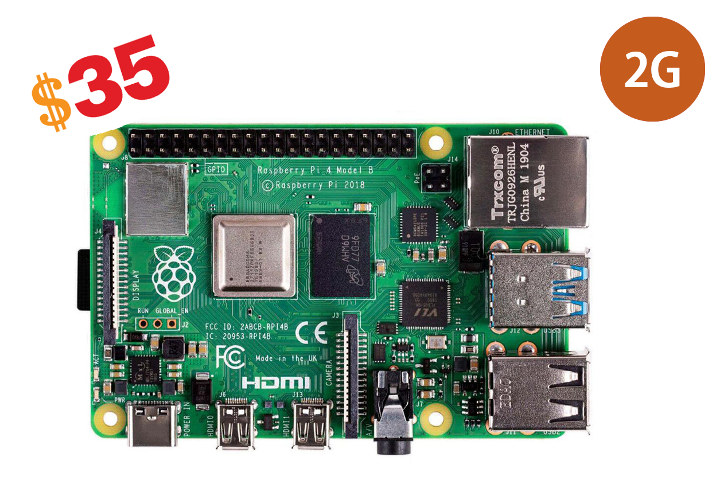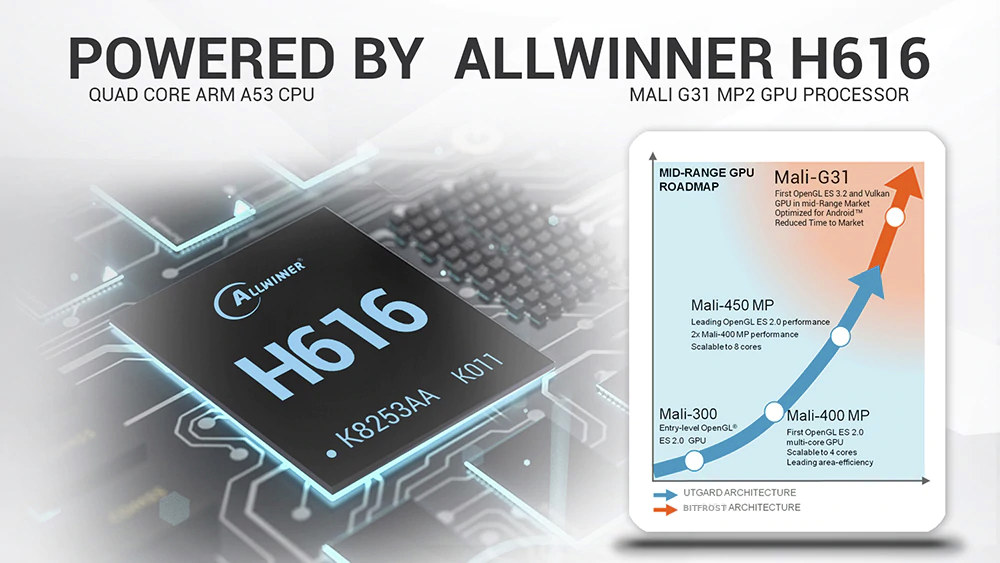Announced in February 2019, STM32MP1 Cortex-A7/M4 processor family recently got an update with 24 new SKU’s boosting the Cortex A7 core frequency to 800 MHz instead of just 650 MHz for the SoC’s announced last year. One of the first companies to take advantage of the new parts will be Octavo Sytems that unveiled OSD32MP1 system-in-package (SiP) last year combining STM32MP15x MPU, up to 1GB RAM, 4K EEPROM, STPMIC1 power management IC, two oscillators, and over 100 passive components into a single chip. The company also introduced two upcoming development kits for the STM32MP1 based SiP: OSD32MP1-BRK “Flexible Prototyping Platform” and the more featured OSD32MP1-RED evaluation & development board. Both boards are supported by OpenSTLinux which we covered in our previous articles about STM32MP1. OSD32MP1-BRK Breakout board for OSD32MP1 SiP The first board aims to provide easy access to the I/O of the STM32MP1 processor via breadboard compatible headers, and […]
UNISOC Unveils T7520 5G SoC Manufactured with 6nm EUV Process Technology
UNISOC has launched its second-generation 5G mobile SoC with T7520 processor manufactured with a 6nm EUV process technology and equipped with four Arm Cortex-A76 cores, four Arm Cortex-A55 cores, as well as an Arm Mali-G57 GPU, and the company’s Makalu 5G platform. T7520 processor is said to support “coverage enhancement for any application scenario, by allowing carriers to deploy 5G on their existing 4G spectrums” (aka NSA = Non-stand Alone). and is optimized for use on 500 km/h high-speed railway. Highlights of the processor include: Advanced 6nm EUV process technology with extremely high lithographic resolution and a better balance between cost, performance and power consumption. Compared to the previous 7nm process, the new process has an 18% improvement in density of transistors and reduces power consumption by 8%. Lower power consumption made possible by the improved process mentioned above as well as an improved low-power consumption architecture and AI-based power […]
Panfrost Open-Source Arm Mali GPU Driver Gets Experimental OpenGL ES 3.0 Support
Panfrost is the open-source driver being developed for Arm Midgard and Bitfrost GPUs. The first versions focused on support for OpenGL ES 2.0, but the more recent OpenGL ES 3.0 enables faster and more realistic rendering. The goods news is that Panfrost support for experimental OpenGL ES 3.0 has landed in Mesa according to a recent post on Collabora blog. Specifically, Panfrost now supports instanced rendering, primitive restart, uniform buffer objects, 3D textures, and multiple render targets (on Mali T760 and up) all of which are OpenGL ES 3.0 features. People who are not into graphics development may not know about the purpose of those features, but Alyssa Rosenzweig, a free software graphics hacker leading Panfrost, explains: … instanced rendering and primitive restart allow developers to write faster graphics applications, to render efficiently scenes more complex than possible in ES 2.0. … uniform buffer objects and 3D texture give developers […]
Qualcomm Snapdragon XR2 5G VR Reference Design Comes with Dual 2Kx2K Display, Up to 7 Cameras
Qualcomm Snapdragon XR1 was the first processor from the company dedicated to extended reality (XR) and virtual reality (VR) applications. It found its way in various hardware development kits, a well as Google Glass Enterprise Edition v2. We missed the company’s announcement of the Snapdragon XR2 platform with 5G support last December, but Qualcomm has now just unveiled the Snapdragon XR2 5G Reference Design to help OEMs shorten time to market. Qualcomm Snapdragon XR2 Platform Qualcomm did not provide detailed specifications, but the company claims Snapdragon XR2 delivers 2x the CPU and GPU performance, 4x more video bandwidth, 6x higher resolution and 11x AI improvement compared to Snapdragon 835 Mobile XR Platform. It’s also the first XR/VR platform to support seven concurrent cameras, optional 5G connectivity, and enables “true” MR (Mixed Reality) thanks to low latency camera pass-through. Some of the highlights of the processor include: Up to 3K by […]
UBPorts Unity8 Convergence Environment Becomes Lomiri
Back in April 2017, Canonical decided to refocus Ubuntu development for the Cloud and IoT, dropping their mobile/desktop convergence efforts. So Unity8 environment was dropped in favor of GNOME desktop environment, which to this date is still used in recent versions of Ubuntu Desktop operating system. As a reminder, Unity8 was both suitable for desktop PCs, as well as smartphones and tablets through Ubuntu Touch. But at the time, it was working fairly well, even found in devices such as BQ Aquaris M10 tablets. Since the code was open source, UBPorts developer community was formed and a few months later they released their first image for supported phones such as OnePlus One, FairPhone 2, or Optimus L90. The community is still active, and until recently kept using Unity8 name, but there were some drawbacks Unity8 will now become Lomiri pronounced “Low-mee-ree”. So why did they change exactly? A few reasons: […]
STMicro Updates STM32MP1 Family with 800 MHz Cortex-A7 Processors
Until last year, all STM32 microcontrollers were based on Arm Cortex-M “MCU” cores, but that changed with the introduction of STM32MP1 Cortex-A7 + Cortex-M4 processor a year ago. That meant for the first time, we had an STM32 processor with an MMU capable of running Linux or Android. The company had three product lines: STM32MP157 – Dual Cortex-A7 cores @ 650 MHz, Cortex-M4 core @ 209 MHz, 3D GPU, DSI display interface and CAN FD STM32MP153 – Dual Cortex-A7 cores @ 650 MHz, Cortex-M4 core @ 209 MHz and CAN FD STM32MP151 – Single Cortex-A7 core @ 650 MHz, Cortex-M4 core @ 209 MHz All available in four different packages, and with or without hardware security (parts with A and C suffix) meaning we had a total of 24 parts. STMicro has now announced 24 more parts whose main and only difference compared to the STM32MP1 processors launched last year […]
Price of Raspberry Pi 4B with 2GB RAM Drops to $35 Permanently
Raspberry Pi 1 Model B was introduced to the world almost exactly 8 years ago on February 29, 2012, and to celebrate the Raspberry Pi Foundation decided to permanently lower the price of Raspberry Pi 4B with 2GB RAM to $35. This was made possible due to falling RAM prices. The 1GB RAM version will still be sold for $35 to industrial and commercial customers due to long term support commitments. Sadly, the 4GB RAM version remains at $55, so no discount for this version for now. Due to inflation, Raspberry Pi 4B 2G is even cheaper than the first Raspberry Pi 1 since $35 in 2012 is roughly equivalent to $40 now. But more importantly, 8 years make a huge difference in terms of performance and features. The Raspberry Pi Foundation explains the new board is now 40 times faster, has eight times more memory (the very first batch […]
Allwinner H616 TV Box Processor Comes with Mali G31 GPU, Supports Android 10
Allwinner H6 quad-core Cortex-A53 processor with Arm Mali-T720 GPU was launched in 2017 and made its way into various TV boxes and SBC’s. But last year, we got some news of lower-cost versions of the processor with Allwinner H603 and H6 VC200-OS SoC’s. Allwinner H616 Processor Advantages So the first time, I read about Allwinner H616, I thought it was yet another variant of little interest. But it turns out H616 is the first processor from the company with a Bitfrost GPU, namely Mali G31MP2, meaning it supports Vulkan, and down the line, it could potentially be supported by Panfrost open-source graphics driver. Another positive for the processor is support for Android 10, while AFAIK other H6 processors are stuck to Android 9.0. Another advantage is low power consumption leading to lower CPU temperature. It might be a process change or some other optimizations in the silicon, we just don’t […]

